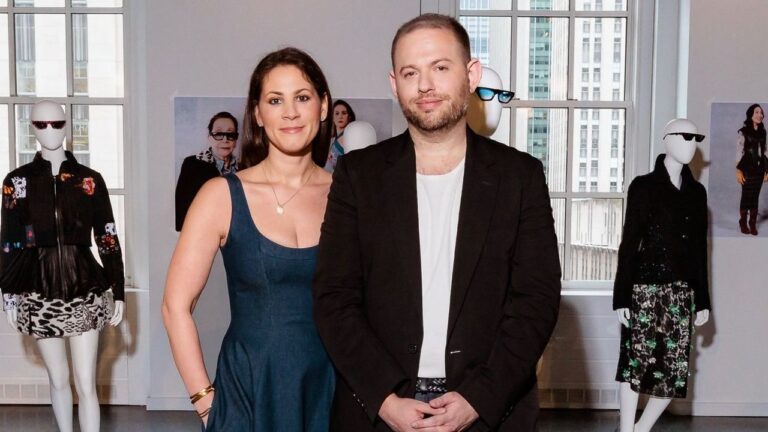Oldham is also optimistic about the connection the pop-up will foster on the designer side. “We’re all kind of in the same world, which is nice to build community through this sale with like-minded designers,” he says. “It’s a good group of a lot of people who I’m friends with and others who I’ve admired from afar.”
The Collective is the first major effort from independent designers to push for sales — and connection — amid tough times. Other brands, though, have embarked on similar physical initiatives to reach clients at this moment. Lingua Franca, for instance, is planning to host more trunk shows to get products directly to consumers. Realisation Par, which paused shipping to the US on 23 April (all of the brand’s silk garments are made in China), is hosting a Los Angeles pop-up from 22 to 30 June as a way to reach US consumers without shipping garments into the country. (The pop-up was announced before the China tariffs were paused for 90 days.)
Oldham, for his part, had hoped to organise a sample sale with fellow New York designers, as he told Vogue Business in April. “Jonathan and Sarah beat me to it,” he jokes. He’s glad that the pair were able to leverage their network built over the course of their 14-year brand journey, making the pre-packaged deal an easy yes.
It’s the right time for a new model, Cohen and Leff agree. Cohen recalls advice he gave students on a recent Parsons School of Design panel: “I told the kids that, aside from being innovative in design, you have to be innovative in business. That’s almost more exciting right now — these new systems, rather than a new silhouette.” These new systems, from methods of production to communication with clients, are what’s missing in fashion right now, Cohen says. “It’s really important to be constantly thinking of new systems to get your clothing on people.”
It’s a conversation that comes up a lot amongst designers of this next generation, Ripley says of her peers. “There’s a real sense of wanting to have ownership over our sales,” she says. “For many of us, at least in our case, we were able to build the brand thanks to the support of our wholesale partners. But making the shift from wholesale to DTC takes time, infrastructure, and funding which aren’t always present.”
Initiatives like this offer a way in. The pop-up may not be a new concept, but rallying a brand’s community to enable designers to keep 100 per cent of profits generated at said pop-up is a significant milestone. Can it be replicated beyond this brief moment?
Cohen and Leff are optimistic. “Obviously we need to tackle this first weekend and see how everyone’s sales are,” Leff says. But they’re keen to expand beyond New York. “There’s always the possibility of doing LA and other states,” Cohen says. “People are excited when designers come to places like Nashville.”
Comments, questions or feedback? Email us at feedback@voguebusiness.com.
More from this author:
No naked dressing, no big gowns: What Cannes’s new rules mean for stylists
The US-China trade agreement brings relief and whiplash for brands
Australian Fashion Week cheat sheet: Resort 2026


